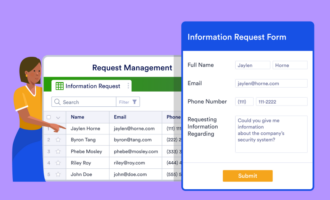Automating key business processes, like the order management process, is an important step to putting your company on a level playing field in the e-commerce space. Whether you’ve already started down the path toward automation or you’ve just now made the decision to shift away from manual order management, you’ll need some assistance.
An automated order management process aims to eliminate as much tedious and time-consuming manual work as possible while still shipping the correct product on time to the person who ordered it.
Automation will free up resources that can be better used for more complex tasks, and it will improve your order accuracy and customer experience by eliminating a good deal of human error along the way. Here’s how you can get started.
Understanding the order management workflow
Every company runs a little bit differently, but the order management process will largely be the same no matter where you go. While different companies’ processes may vary on the surface, they will all likely involve five basic steps for successfully getting a package out the door (and yours should too).
Here’s an overview of each step and what needs to happen in each before the process can continue to the next step.
1. Take the order
This step is simple. Your customer sees something they want, and they make the purchase. Your company’s only responsibility at this stage is to make sure that you receive the order accurately and with as little friction on the customer side as possible — no matter what channel the sale is coming from.
During this step, your company needs to process payment information accurately, make sure the product is still in stock, and capture customer information so you can ensure delivery of the order to the correct address (and the correct recipient).
2. Process the order
After you’ve collected the necessary data, it’s time to put your order management system to work. Order processing is largely about making sure the order information you gathered in the previous step makes its way successfully through all the areas of your business that need to know about it to fulfill the order. By automating this process, you can easily track what stage an order is in at any given time (whether received, packed, shipped, or delivered).
3. Prepare and pack the order
Using the data from the previous two steps, your business must select the product from inventory and pack it for shipment. It’s vital to check that you’ve included every item your customer ordered and that you’ve packed the correct quantity of each item.
While you can do this manually, automating the order-preparation process can increase accuracy and efficiency. Even if you outsource this step to a third-party logistics (3PL) provider, you have to make sure your data is accurate to ensure they ship the correct product.
Finally, be sure to pack orders with care to minimize damage. The last thing your customer needs is to open a package and find that their product was damaged in transport — and the last thing you need is a dissatisfied customer.
4. Ship and deliver the order
If you’ve tackled all three prior steps correctly before shipment, this part of the order management process should go smoothly — outside of any unforeseen external circumstances that might delay the shipment.
But don’t forget about your customers at this point. They’ll want access to their order confirmation and tracking details, so it’s helpful to send automated emails with any relevant shipment and delivery updates to keep them informed and happy along the way.
5. Handle post-sale issues
Ideally, the moment a customer opens their package and receives their order should be the moment when a business really makes their mark. Interesting (and effective) packaging and memorable, shareable unboxing experiences can determine whether your customers remain loyal to your business.
It’s a good idea to make sure your customers also have easy access to return data in the event of a mishap or if they change their minds about your product. Your customer support team should be available to help them through this process, if necessary.
Automating the order management process with Jotform
Keeping the order management process moving along by managing order data and making sure it gets to the right place is incredibly important in e-commerce. That’s why so many companies automate their order management process with Jotform.
Jotform offers more than 10,000 customizable online form templates for businesses in all industries to start automating order management. You can create custom order forms and send them out to all parts of your business at the click of a button, or you can opt to use Jotform’s premade templates for order forms, purchase order approval forms, and even office supplies purchase order forms to give yourself a head start on the competition.
And with Jotform Tables, an online spreadsheet workspace, you can automate order status updates and order tracking. With the order tracker spreadsheet template, for example, you can keep track of customer information, order details, and payment information. If those fields aren’t enough, you can customize the template (no coding necessary — just drag and drop) to include whatever your business needs.
Whether you’re automating the order management process for your customers, your business, or both, Jotform can bring a new level of efficiency to your e-commerce workflow.
Photo by Tima Miroshnichenko from Pexels













































































Send Comment: